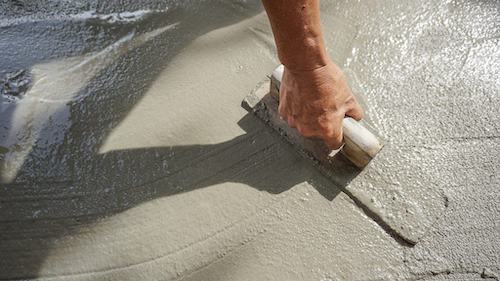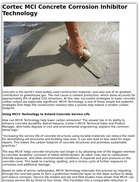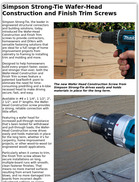Cortec MCI Concrete Corrosion Inhibitor Technology

Concrete is the world’s most widely used construction material—and also one of its greatest contributors to greenhouse gas. The root cause is cement production, which alone accounts for approximately 8% of global CO2 emissions. At this rate, successful strategies to lower concrete carbon output are especially significant. MCI® Technology is one of those simple but powerful strategies that helps the construction industry take a pivotal step toward a smaller carbon footprint.
Using MCI® Technology to Extend Concrete Service Life
How can MCI® Technology help lower carbon emissions? The answer lies in its ability to enhance concrete durability. Ashraf Hasania, Cortec’s MCI® Technical Sales and Product Manager, who holds degrees in civil and environmental engineering, explains the common-sense logic:
“Increasing the service life of concrete structures using durable materials can reduce the need for demolishing old structures and building new ones. It can also lead to less need for major repairs. This lowers the carbon footprint of concrete structures and promotes sustainable practices.”
The way MCI® helps concrete structures last longer is by attacking one of the biggest enemies to concrete durability: corrosion of metal reinforcement. As rebar rusts due to carbonation, chloride exposure, and other environmental conditions, it expands and puts pressure on the concrete cover. This leads to cracking, spalling, and a vicious cycle of further exposure to corrosives and additional damage.
Based on salts of amine carboxylates, MCI® Technology interrupts this process by migrating through the concrete pores to form a protective molecular layer on the rebar surface to delay and reduce corrosion. Service life models and lab and field studies have shown that MCI® can increase service life by three to four times. This translates into a comparable reduction in concrete’s carbon footprint.
When Can MCI Be Used?
MCI® can be used at any stage in a structure’s lifecycle, but the best course to pursue is early treatment.
“Sustainability in construction starts early in the process,” Hasania advises, “specifically in [the] design phase with careful selection of construction materials and concrete mixes.”
Ideally, this includes the choice of MCI® concrete admixtures, which can be added to new concrete at the ready-mix plant or construction site. In contrast to calcium nitrite admixtures, MCI® admixtures have a low dose independent of chloride loading and do not negatively affect concrete mix properties.
Existing structures can be treated with MCI® in the form of surface applied corrosion inhibitors (with or without water repellent) and repair mortars. Once applied, the MCI® molecules migrate through concrete pores to protect embedded rebar in sound concrete, or to even out corrosion potential and interrupt the problematic ring-anode/halo effect between new patch repairs and old concrete.
Other Sustainability Features
In addition to the main goal of helping concrete structures last longer, MCI® Technology offers other attractive features. For example, MCI®-2005 is a USDA Certified Biobased Product that contains 67% USDA certified biobased content. This use of renewable resources can help the project earn credits toward LEED certification while adding a more sustainable image to the structure and builder.
Another attractive feature is the low toxicity of MCI® products, many of which are certified to meet NSF Standard 61 for use in potable water structures.
Take a Step Toward Sustainable Construction
Considering the costs of construction and rebuilding alone, the benefits of extending concrete service life are clear. Add to it the ripple effect of decreasing the amount of new cement needed to repair and replace old structures, and the advantages of MCI® Technology go even further—helping the construction industry take major steps toward a smaller carbon footprint and a more sustainable future.
Learn more about sustainability with Cortec® MCI® today: www.cortecmci.com/sustainability











